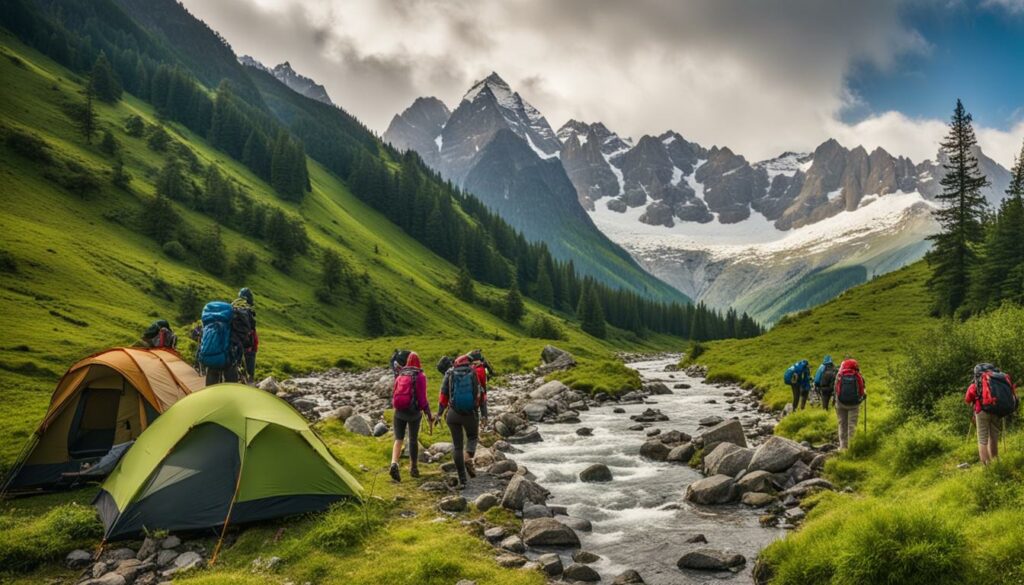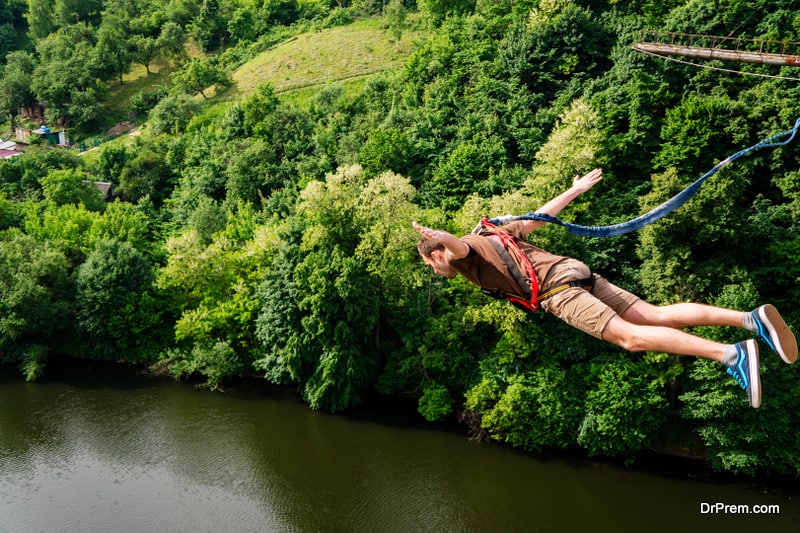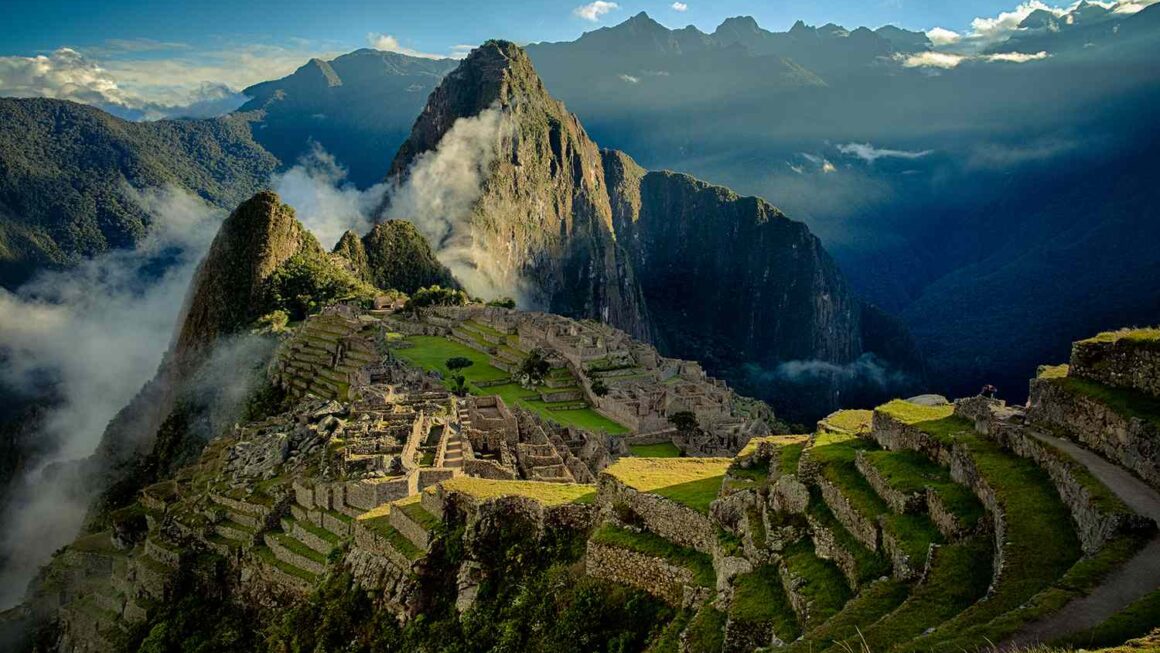In recent years, the world of travel has seen a significant shift, with more and more people seeking experiences that go beyond the ordinary. Traditional tourism, which typically involves visiting well-known landmarks, cultural sites, and relaxing vacations, is no longer the only option. A growing number of travelers are opting for adventure travel—an immersive and thrilling way of exploring the world that challenges the mind and body while creating unforgettable experiences.
But what exactly makes adventure travel different from traditional tourism? In this article, we’ll delve into the key differences between these two types of travel and explore why adventure travel has become such a popular choice for those seeking something more than the typical vacation.
1. Definition and Focus: Exploration vs. Relaxation
Adventure Travel involves engaging in physically challenging activities that often require a sense of risk and exploration. It focuses on experiencing the raw beauty of nature, testing personal limits, and diving deep into environments that are often off the beaten path. Adventure travelers tend to seek experiences that offer a sense of accomplishment, adrenaline, and connection to the environment.
Traditional Tourism, on the other hand, typically revolves around relaxation, sightseeing, and cultural immersion. It is about visiting famous attractions, experiencing local cuisine, and learning about a destination’s history and traditions. The focus is often on comfort, convenience, and enjoying leisurely activities without pushing boundaries.
Key Differences:
- Adventure Travel: Physical activities like hiking, rafting, rock climbing, and wildlife safaris.
- Traditional Tourism: Sightseeing, lounging by the beach, and visiting museums and landmarks.
2. Immersive Experiences: The Thrill of Discovery
One of the main draws of adventure travel is the sense of immersion it provides. Travelers are often far removed from the typical tourist spots and instead venture into more remote or rugged locations. Whether it’s trekking through dense jungles, exploring remote villages, or climbing mountains, adventure travel offers the opportunity to connect with nature and cultures in ways that traditional tourism can’t replicate.
Traditional Tourism focuses more on structured tours to popular attractions, where experiences are often curated for ease and comfort. While travelers might gain insights into the culture and history of a destination, they are typically not required to participate physically or emotionally to the same extent as in adventure travel.
Key Differences:
- Adventure Travel: Intense and physically engaging experiences like white-water rafting or hiking to hidden waterfalls.
- Traditional Tourism: Visiting historical landmarks or guided tours through popular cities and towns.
3. Physical and Emotional Challenges: Pushing Boundaries vs. Relaxing
Adventure travel inherently involves pushing personal limits and overcoming challenges. Whether it’s summiting a volcano in Iceland, hiking the Inca Trail to Machu Picchu, or surfing the waves in Costa Rica, adventure travel often requires physical stamina, mental strength, and a willingness to step outside one’s comfort zone. Many adventure travelers seek these challenges because they offer a sense of accomplishment, personal growth, and lasting memories.
In contrast, traditional tourism is generally less challenging. While it can involve physical activities, such as walking tours or visits to historical sites, it is not as physically demanding. The focus is often on relaxation and leisure rather than pushing boundaries or achieving specific personal goals.
Key Differences:
- Adventure Travel: Activities that test endurance, strength, and courage, like rock climbing, scuba diving, or multi-day trekking.
- Traditional Tourism: Sightseeing, relaxed cultural tours, and activities focused on comfort and enjoyment.
4. Risk and Safety: Seeking Adventure vs. Comfor
One significant difference between adventure travel and traditional tourism is the level of risk involved. Adventure travel often includes activities that come with a higher degree of inherent risk. Travelers might engage in extreme sports or explore remote, untamed locations where the infrastructure and medical support may not be as easily accessible. While these risks are part of the adventure, travelers are often required to sign waivers and follow safety protocols.
Traditional Tourism, however, prioritizes safety, comfort, and convenience. The risk factor is significantly lower, with most activities designed to be safe and accessible for travelers of all ages and abilities. Traditional tourists are more likely to stay in established hotels, use organized transport, and stick to well-trodden paths.
Key Differences:
- Adventure Travel: High-risk activities like skydiving, mountaineering, or bungee jumping.
- Traditional Tourism: Low-risk activities like guided tours, lounging by the pool, and visiting museums.
5. Environmental Impact: Sustainable Practices in Adventure Travel
Adventure travelers often seek out destinations that are off the beaten path and may engage in activities that emphasize environmental conservation and sustainability. Many adventure travel companies focus on eco-friendly practices, ensuring that the natural environments they explore are preserved for future generations. This often involves promoting responsible travel behaviors, such as respecting wildlife, minimizing waste, and supporting local communities.
In contrast, traditional tourism can sometimes lead to overtourism, where popular destinations become overcrowded, resulting in environmental degradation. Though some traditional tourism practices are becoming more sustainable, adventure travel tends to place a stronger emphasis on eco-consciousness and responsible tourism from the outset.
Key Differences:
- Adventure Travel: Focuses on eco-tourism, sustainable practices, and low-impact exploration.
- Traditional Tourism: Often less focused on sustainability and more reliant on mass tourism infrastructure.
6. Cultural Engagement: Learning by Doing vs. Observing
Adventure travelers often have more hands-on cultural experiences that allow them to learn about local customs and traditions through active participation. For example, travelers may learn how to cook traditional dishes in a rural village, participate in a tribal dance, or work alongside local guides on a wilderness trek. These immersive experiences provide a deeper connection to the local culture, often fostering a more meaningful relationship with the people and environment.
Traditional tourists, while they may visit cultural landmarks or historical sites, are generally more likely to observe local culture from a distance rather than actively engage with it. Their experiences tend to be more passive, taking in the sights and sounds of the destination without fully immersing themselves.
Key Differences:
- Adventure Travel: Participating in local traditions and activities, like trekking with indigenous guides or taking part in community-based conservation efforts.
- Traditional Tourism: Observing local culture from a distance, such as visiting museums or attending a cultural show.
7. The Sense of Achievement: Accomplishment vs. Relaxation
Adventure travel often provides a sense of achievement. Completing a challenging trek, conquering a physical obstacle, or exploring a remote destination can leave travelers with a profound sense of personal accomplishment. These types of experiences become milestones in a traveler’s life, offering stories to share and memories to cherish forever.
In contrast, traditional tourism focuses more on relaxation and enjoyment. While it can provide wonderful memories and a sense of wonder, it doesn’t necessarily leave travelers with the same sense of achievement that comes from completing an adventure.
Key Differences:
- Adventure Travel: The sense of accomplishment after completing challenging activities or visiting hard-to-reach locations.
- Traditional Tourism: Enjoying leisure activities, taking in beautiful views, and relaxing at resorts or spas.
Conclusion: Which Is Right for You?
Both adventure travel and traditional tourism offer unique and rewarding experiences, but the choice between the two depends largely on personal preferences. If you thrive on adrenaline, physical challenges, and immersing yourself in nature and cultures, adventure travel may be the perfect fit. If you prefer relaxation, cultural exploration, and a more structured vacation, traditional tourism might be a better choice.
Ultimately, both types of travel offer opportunities to learn, grow, and discover the world in different ways. The key is to find what suits your interests and travel style best, ensuring that your journey becomes an experience you’ll never forget.




